Cloth diapers aren’t the same as those your mom or grandma wrestled with years ago. They’ve evolved, and if you’re jumping into cloth diapering—whether to save cash or go green—you’ve probably noticed the insane variety: tons of styles, materials, and fasteners.
Be sure to always do your own research on cloth diapers and options. The prices, companies, and results are constantly changing and evolving.
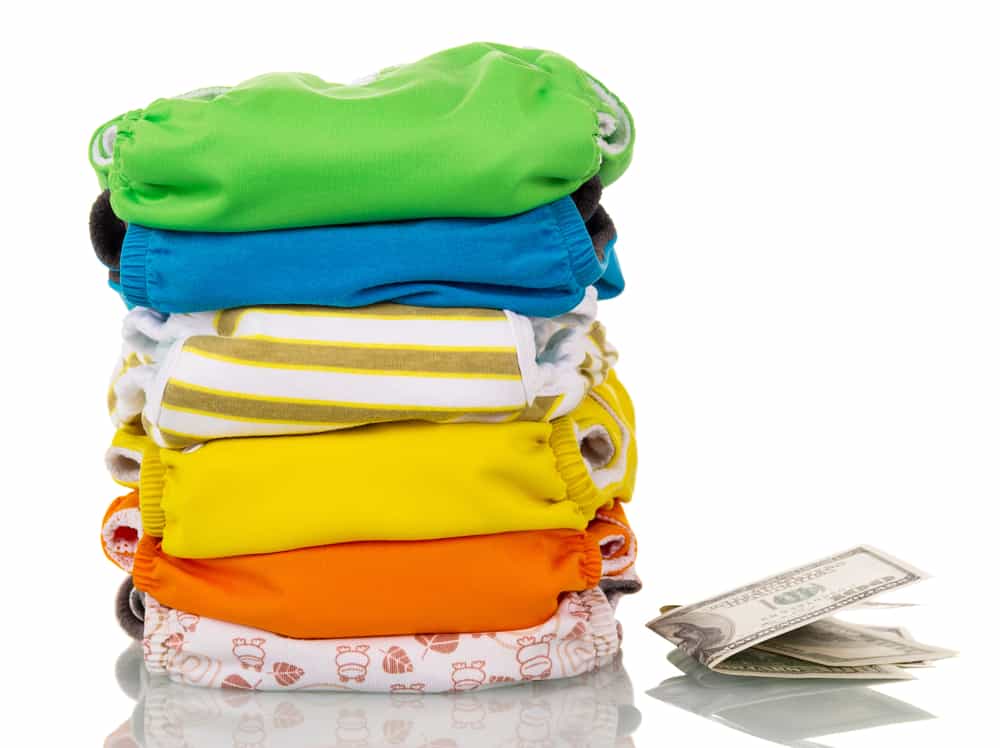
Photo Credit: Deposit Photos
Ask 100 parents about the best cloth diapers, and you’ll get a wild mix of answers—probably 80 different ones! My advice? Don’t drop a ton of money on a full stash right away. Test the waters first. I grabbed a handful of styles and brands before my little guy arrived, figured out what worked for us (and him), and then stocked up on our favorites.
If you’re feeling lost—or just not 100% sold on cloth yet—look into trial programs. Some companies let you “rent” a mix of diapers to try out. You usually pay a small fee or deposit, and if you send them back, you get most of it refunded (or store credit toward your picks).
For example, Jillian’s Drawers has a 21-day trial for just $10—you pay $110.97 for a small set, and they refund $87.96 even if the diapers get stained. It’s a low-risk way to figure out what’s what.
Still scratching your head over the cloth diaper system? Don’t sweat it. It’s changed a ton over the decades, but it’s still simple—and budget-conscious. Stick with me—I’m breaking down the main types, plus inserts, covers, and fasteners, with the good, the bad, and my two cents on each.
Diaper systems
Understanding all the different options is important! Let’s break down the different types of diaper systems to see what might work best for you and your baby.
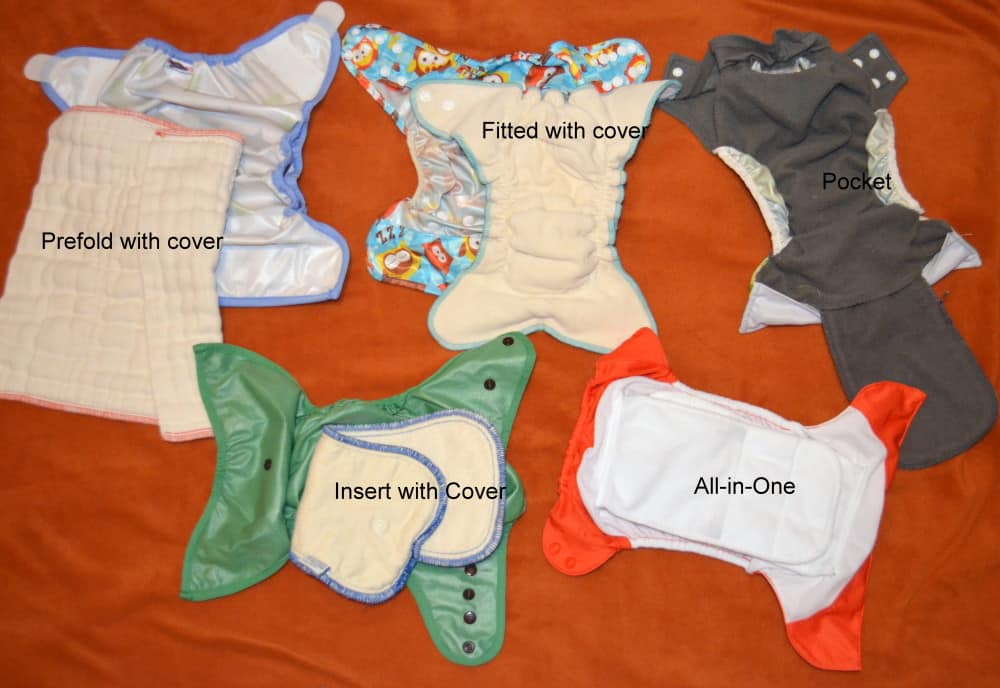
Prefolds with Covers
This is the OG cloth diaper setup from before disposables took over. You fold or wrap prefolds around your baby, secure them with a Snappi (those little plastic grippers) or old-school diaper pins, then slap on a waterproof cover. You can also tri-fold them and lay them inside the cover—or even stuff them into pocket diapers if you’re feeling creative.
Suggested stash: 24 prefolds, 4-6 covers, 3-4 Snappis
Pros: These are the cheapest cloth diapers out there. Made from cotton or blends like cotton/bamboo or cotton/hemp, they’re natural, super absorbent, and easy on the wallet. The cover? Wipe it down, air-dry it, and reuse it a few times unless it gets messy. Plus, you can tweak the fit however you fold it.
Cons: It’s a two-step dance to get them on, and they take forever to dry. They’re bulky—good luck fitting pants over them. Some come in sizes (not one-size-fits-all), so you might need two batches before potty training. Oh, and they get wet—your hands, baby’s skin, the whole deal.
My take: I tried prefolds when my stash was tiny. With my newborn, I skipped the fastener, just wrapped it snugly, and added a cover—or tri-folded it inside. It worked fine, but man, they were chunky. I can’t picture wrestling them onto a squirmy toddler. That said, they’re killer as burp cloths (sanitize them first!) or for stuffing pocket diapers. Check out Econobum trial packs (a cover + 3 inserts) or Thirsties if you’re curious.
Fitted Diapers with a Cover
Think pre-folds, but pre-shaped, and no folding required. They snap or Velcro on like disposables and need a waterproof cover over the top.
Suggested stash: 20-24 fitted diapers, 4-6 covers
Pros: Made from cotton, bamboo, or blends, they’re natural and soak up a lot. If clean, covers can be reused a few times. Elastic leg gussets make leaks rare—great for overnight use.
Cons: Two steps with a wiggly baby? Ugh. They’re wet against the skin, slow to dry, and bulky. If any bit pokes out, clothes get damp. Plus, they’re sized, so you’re buying 2-3 rounds as baby grows—pricey!
My take: I borrowed some Bumkins fitted from my sister-in-law. They were super soft and had no leaks—I loved that. I hated fastening two layers and the bulk. I used them sometimes but wouldn’t ask anyone else to deal with them. Once my son outgrew the smalls, I didn’t buy more.
Inserts with Covers (or All-in-Twos)
Here, absorbent inserts lay in or snap into a cover. You’ve got options like cotton cloth diaper inserts, bamboo cloth diaper inserts, hemp cloth diaper inserts, or microfiber. Covers come later!
Suggested stash: 24 inserts, 8-10 covers (aim for 3 inserts per cover)
Pros: No mess to touch—just dump it in the pail. Reuse the cover if it’s clean. Customize the insert for your baby’s needs. Covers dry fast, inserts can hit the dryer, and it’s cheap cloth diapers territory since you buy fewer covers.
Cons: Inserts can shift or wick if they poke out. Not the best for overnight unless you double up or grab “overnight” ones. Daycares might balk since the whole thing gets swapped each change—check first.
My take: Our go-to! I love reusing covers ‘til laundry day (if they’re not poopy), and they dry in hours. I swap inserts—hemp diaper inserts for heavy wetters, bamboo inserts for cloth diapers for softness—depending on naps or car trips. They’re thin, so clothes fit better, and I stretch laundry to three days (four max—don’t let the stink settle!).
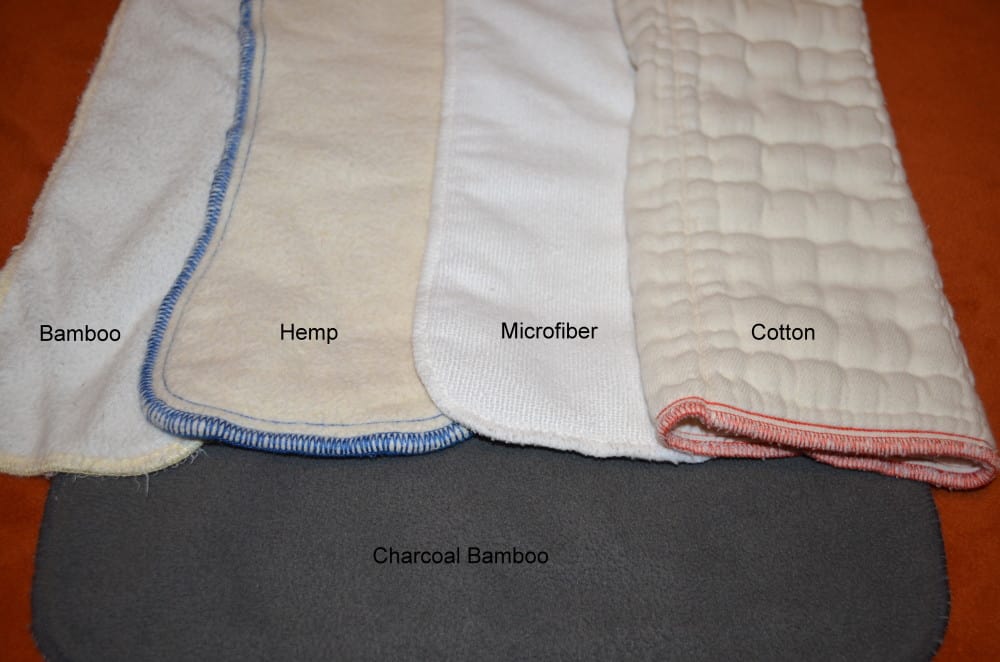
Pocket Diapers
These have a pocket you stuff with inserts (cotton, hemp, whatever). The lining’s usually fleece, suede cloth, or bamboo—some babies don’t vibe with suede, though.
Suggested stash: 18-24 pocket diapers + inserts (grab extras for double-stuffing)
Pros: Stuff them ahead, and they’re grab-and-go like disposables. Super customizable—double-stuff with hemp cloth diaper inserts or whatever for overnight. They dry quick since you separate them for washing. Best pocket diapers like Bum Genius 4.0 are fan faves.
Cons: Unstuffing wet ones? Gross. Some brands claim inserts pop out in the wash, but most need pulling. Stuffing can be a pain—harder than it sounds. The whole thing gets washed every time.
- FASION & STYLISH -Why not get these reusable, washable super-absorbent and comfortable cloth nappies / diapers, which are also called modern cloth nappies (MCNs) or pocket nappies. For your baby, for the cost of buying disposable nappies, these reusable nappies and inserts will last you for a much longer period of time.
- HIGH QUALITY, ADJUSTABLE, REUSABLE & WATERPROOF -Outer layer: polyester with waterproof and breathable TPU .It's convenient for mammy to carry baby while taking a walk or doing chores. Inner layer: suede cloth inside, it does not hold moisture itself ,the moisture get drawn away to the insert to keep your baby dry . Insert: each diaper would come with two 3-layer inserts. Insert dimension approx 13.7” x 5.5”
- SAVE MONEY & ONE SIZE-Our reusable cloth diapers are designed for families who require premium products. Suitable for babies and toddlers 3kg-15kg (6.6 – 33 pounds) (a rough guide for reference only) .Length of Diaper: 15” in length X 13” in width. One size fits all– you can adjust the diaper to your desired size (S,M or L) by snapping onto different rows of buttons on the nappy.
My take: I warned my husband some hate stuffing—he shrugged, “How hard can it be?” He hates it now. His big hands struggle, and some inserts won’t lie flat. I’ve had wicking leaks, but it’s not a dealbreaker. Try a couple first—Alva, Kawaii, Charlie Banana are solid. We use them when the stash is low.
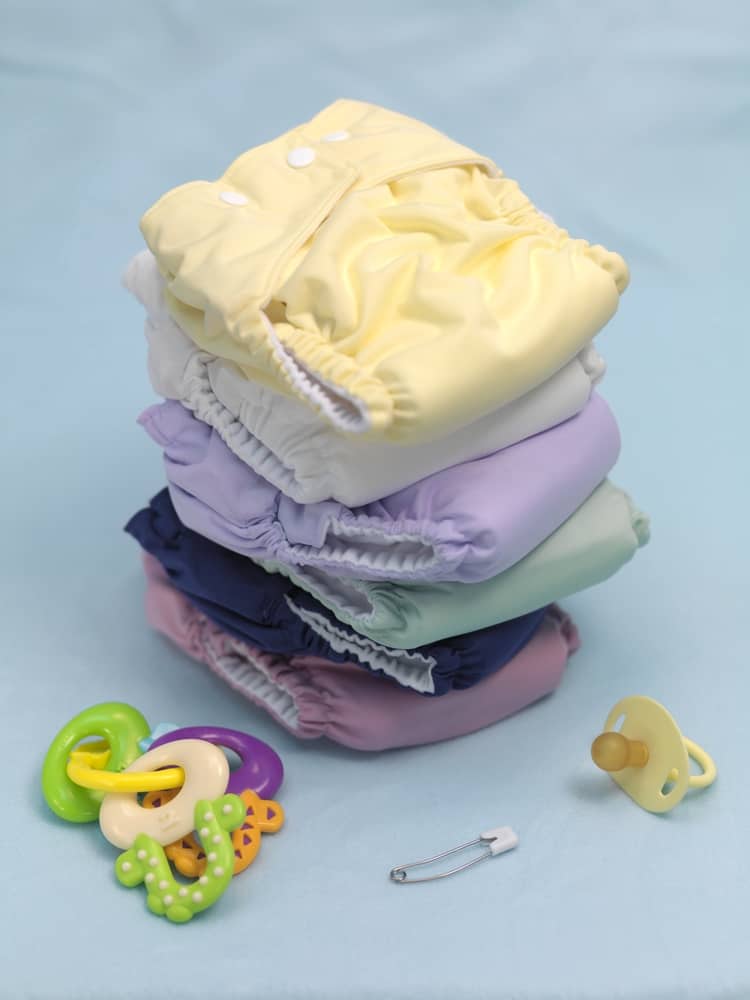
All-in-Ones (AIOs)
Absorbent stuff sewn right into a waterproof cover—easiest option out there.
Suggested stash: 18-24 diapers
Pros: One piece, like disposables. Super absorbent solo, but you can stuff extra if needed. Perfect if you’re intimidated by cloth. Toss it in the wash, dry it, done.
Cons: Air-drying takes forever (two days+), and they’re pricier.
My take: I love the simplicity, but I hate the dry time and cost.
Cover Options
For prefolds or inserts, pick your cover vibe:
- PUL: Most popular—waterproof, not plasticky, $4-$15. Air-dry for longevity.
- Minky: Soft outside, PUL inside—cozy but pricey.
- Wool: Breathable, natural, rash-friendly. Pricey, sized, hand-wash only, but reusable for weeks.
- Fleece: Cheap, breathable, but leakier and sized.
Insert Options
Unless you’re all-in on AIOs, you’ll need inserts. Here’s the rundown:
- Cotton: Heavy, absorbent, thick. Great in prefolds or pockets.
- Microfiber: Cheap, lightweight, stay-dry feel, but stinky over time. Pocket-only!
- Bamboo: Soft, fast-absorbing. Bamboo cloth diaper inserts like Applecheeks rock.
- Hemp: Thin, mega-absorbent, anti-stink. Hemp cloth diaper inserts are my jam.
- Charcoal Bamboo: Absorbent, stay-dry, slower to soak in.
- Zorb: Crazy fast absorption—check zorb fabric Hobby Lobby if you’re crafty.
- Disposable: Good for travel—less waste than full disposables.
Fastener Options
- Snappi: Grips prefolds tight—no pins needed.
- Velcro: Easy, adjustable, but wears out and toddlers can undo it.
- Snaps: Sturdy, baby-proof, trickier to fit at first.
My take: Velcro for newborns (best cloth diapers for newborns), snaps for one-size-fits-all.
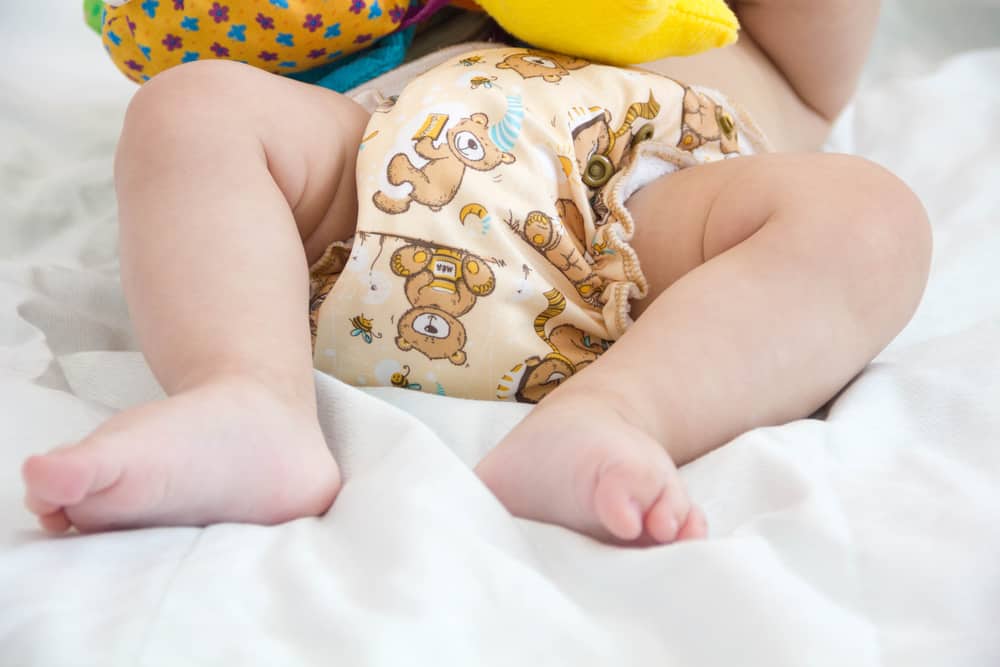
Which Is Cheaper: Cloth Diapers or Disposables?
Cloth wins long-term. Disposables add up fast—$80-$1200/month. A solid cloth stash? $200-$500 upfront, then you’re set.
How to build a cheap cloth diaper stash?
Start with prefolds or inserts + covers, snag secondhand deals, or try a cloth diaper service (like in Phoenix or Atlanta) if washing’s not your thing.
Tips & Ideas
- Mix and Match: Don’t lock into one system—blend prefolds, pockets, whatever works.
- Secondhand Score: Hit up local mom groups for cheap deals—just sanitize well.
- Stash Starter: Aim for 20-24 diapers total; tweak as you go.
- Service Option: Check cloth diaper service Phoenix or cloth diaper service Atlanta if you’re near those spots—hassle-free!
These descriptions should help you find the perfect cloth diaper or give you enough information to decide which varieties to try. The brands mentioned are only a fraction of what’s available, but they are the ones I’m most familiar with and feel comfortable recommending.
In the comments, let me know which type and brand of diaper you prefer!
You might also enjoy:
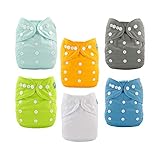

I used a diaper service with prefolds and covers with my first born (1998) and loved them. The service went out of business (the only one in my area) so I purchased used diapers from her in a few sizes. They were so awesome!
Snappis are awesome, too! Get several. They do eventually break down (the plastic) after major use.
You can also make your own covers with the BabyVille line of products which you can find at Joann’s, Hobby Lobby (limited), and other places. They have PUL in solids and prints, hook/loop tape and snaps in colors, and even little decorative items.
I ended up using cloth 95% of the time with both of my kids and it was the best decision ever. Potty training was done in two days, too, using cloth pull ons rather than disposibles.
Thanks so much for posting this, this is a great article!! I like how you put the picture up top, that help’s a lot! I really learned a lot, Iam keeping this email in my baby folder, we are trying for another right now, it;s been taking longer than Id like! I did not cloth diaper my first babies, so this is all new to me. Thanks again, I love it!